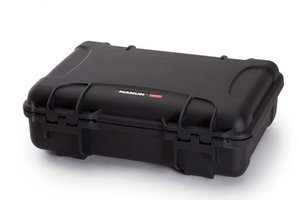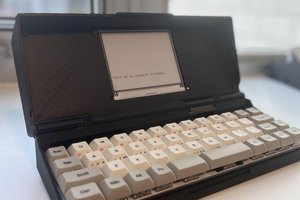Starting off, this is my first cyberdeck. I have always wanted to make one and when I realized the legend Gibson himself would lay his eyes on my creation, I knew it was time to make one.
The goals for this deck:
1. MODULAR!! I wanted this to be a portable workstation that could be modified for whatever project I was working on.
2. No 3D printed parts!! Just to show all of you, without access to a 3D printer. You can still make a unique and great looking deck. ( I personally have an ender 3, but thought this would be fun )
3. Made from as much recycled parts and materials as possible!! I imagined what it would be like in the sprawl, and wanting to build a deck. What better way than using whatever you can find and have access to? It's better to spend money on the important things like hardware! I've always been a function over form guy. ( In the end, the only things purchased for this was the keyboard, touchscreen display, and having custom sticker I designed made for flavor)
In its current state for the Cyberdeck Contest. It has the following features:
Raspberry Pi4. Main display is touchscreen. 2nd display for sys info (using AIDA64). Completely modular, I achieved this by utilizing mobo standoffs and Velcro. 2.4 and 5G wifi usb adapters, Removable 20000 MaH battery for "on the go" use. Also can be powered via an outlet. OLED display ( on startup produces "HIGH TECH LOW LIFE, then after 10 seconds it switches to "MODICUM TECH" It is run by a rp2040 feather, that is easily accessed for additional use). Wireless keyboard with elven/english letters (because I love shadowrun!). Aluminum body with storage, one section has a foam cutout inserted with lockpicks and a handcuff key that is easily removed for access, the other holds a pico, ceramic capacitors, mobo standoffs, (2) .92x128 OLEDS, 400mah lithium batter. A usb hub that can be powered on its own, so you can use external hard drives or other things that just the pi cant run with its own power. Modular parts include, an Arduino uno, mounted ssd, mounted prototype board to solder, a small "box" that holds a plastic bag with capacitors, resistors, diodes, pico, and another prototype solder breadboard. Removable plastic cover's to access the storage. An aluminum piece on the side, that an L bracket can fit into. I used that to produce the ability to add a breadboard, or voltage tester. Also a side attachment to hold whatever your soldering with. One of the L brackets used has a strip of velcro attached to it, so adding additional modular items in the future will be easy! It also has some custom stickers I designed in photoshop, to give it some flavor. Then obviously it's loaded with a ton of software for circuit designing, coding, communication, pentesting etc!!!
( Since deadline is right around the corner, I'm going to write out my process. Then give a link to a gallery of the abundance of pictures I took of the process. I don't have time to format all the pictures sadly. And make an extremely detailed write-up. In the future I will edit them so this post will have pictures. And make things more cohesively written. But making the deadline for the contest comes first!! )
Additional pictures can be found on my photobucket, and in the file section.
https://app.photobucket.com/u/nicktalife/a/b583971d-15de-4f3e-9d6c-155cd314fb2d
 someghostdude
someghostdude
 rahmanshaber
rahmanshaber
 Auron
Auron
 Cees Meijer
Cees Meijer
 zerowriter
zerowriter